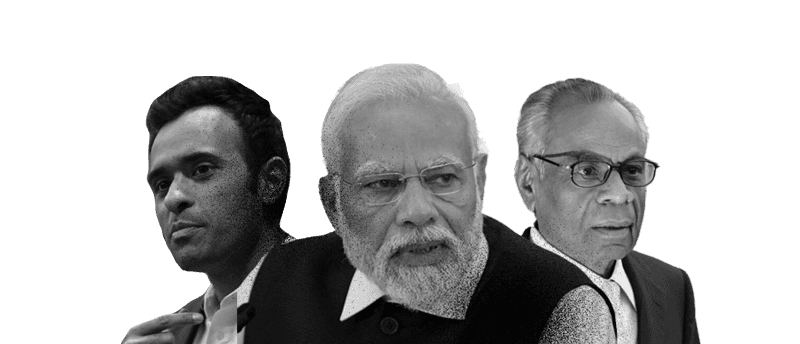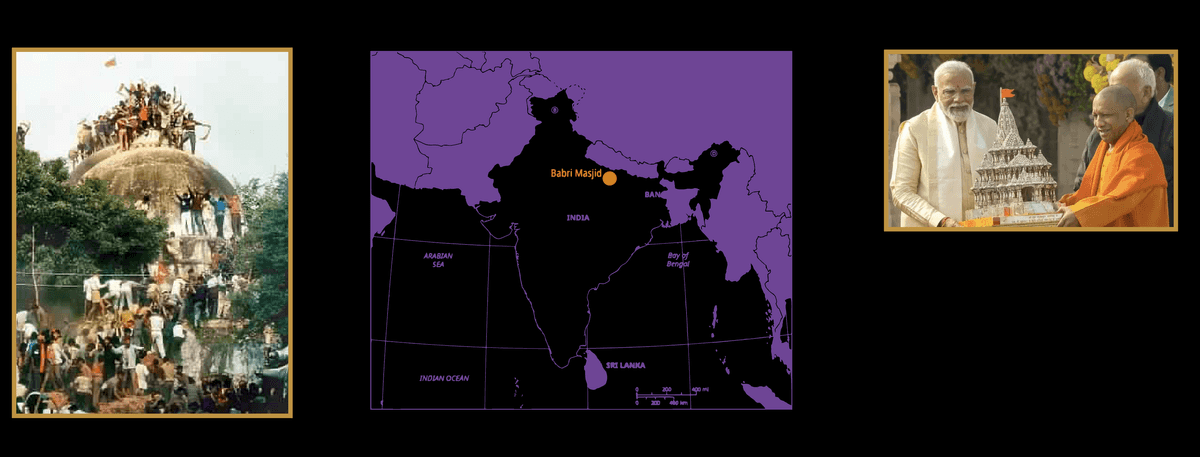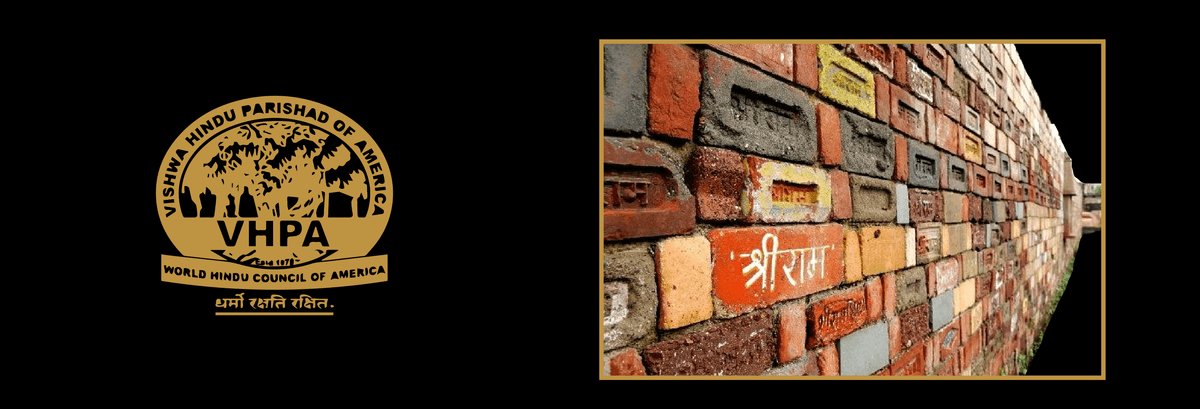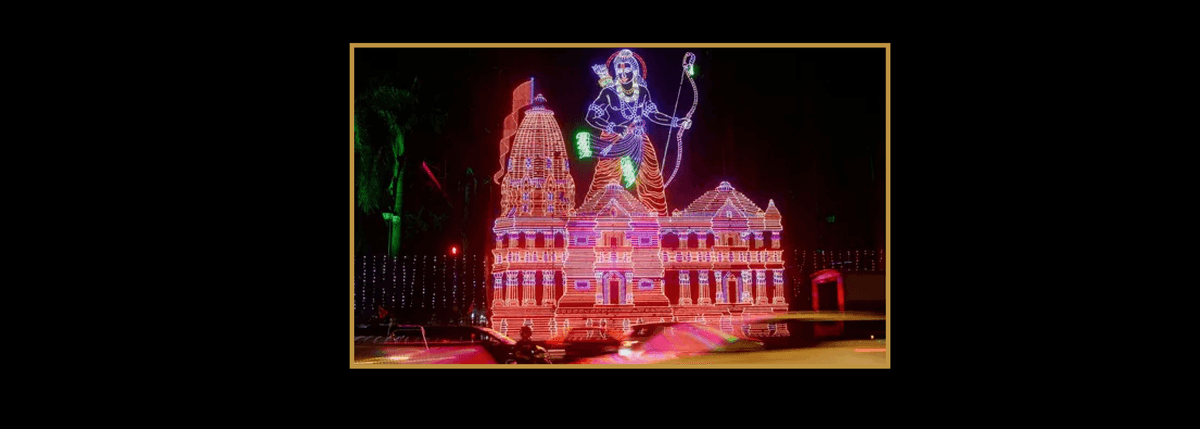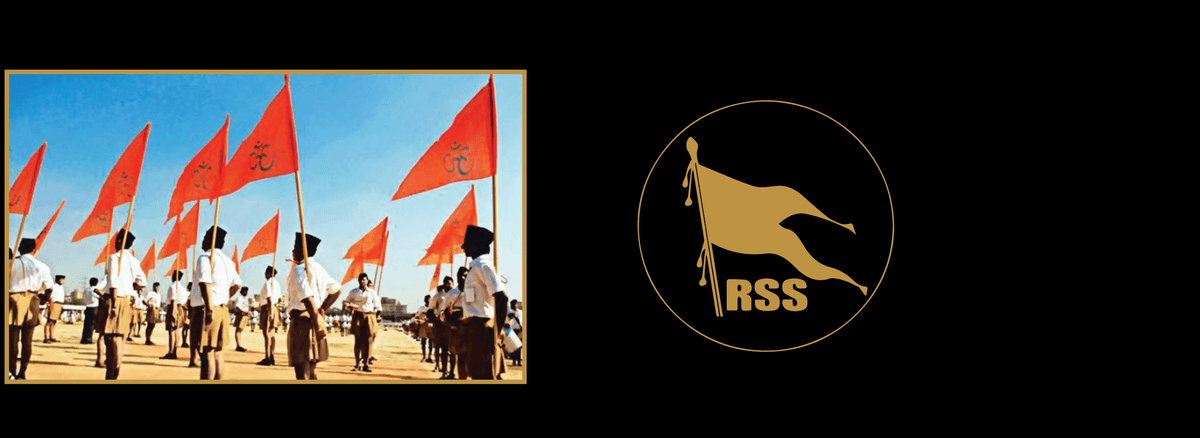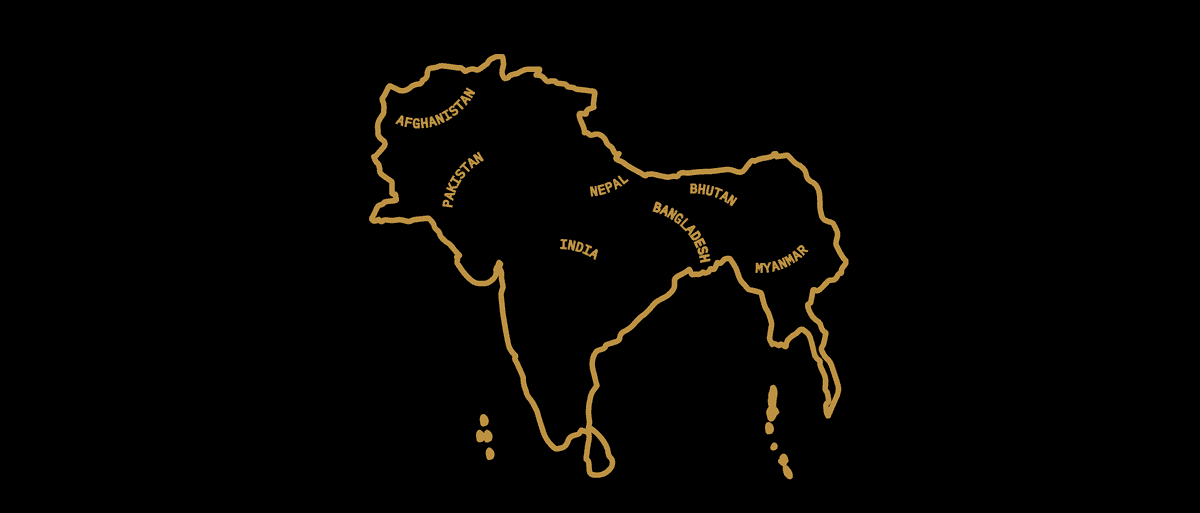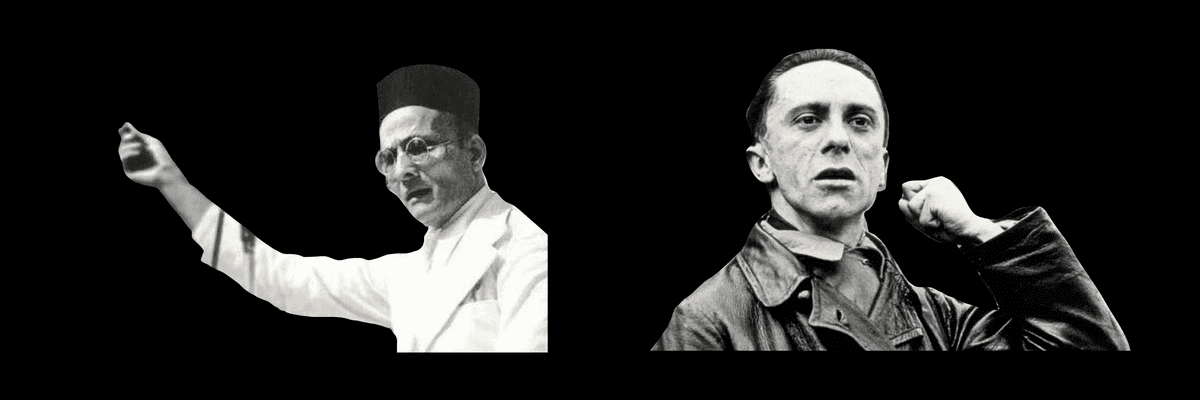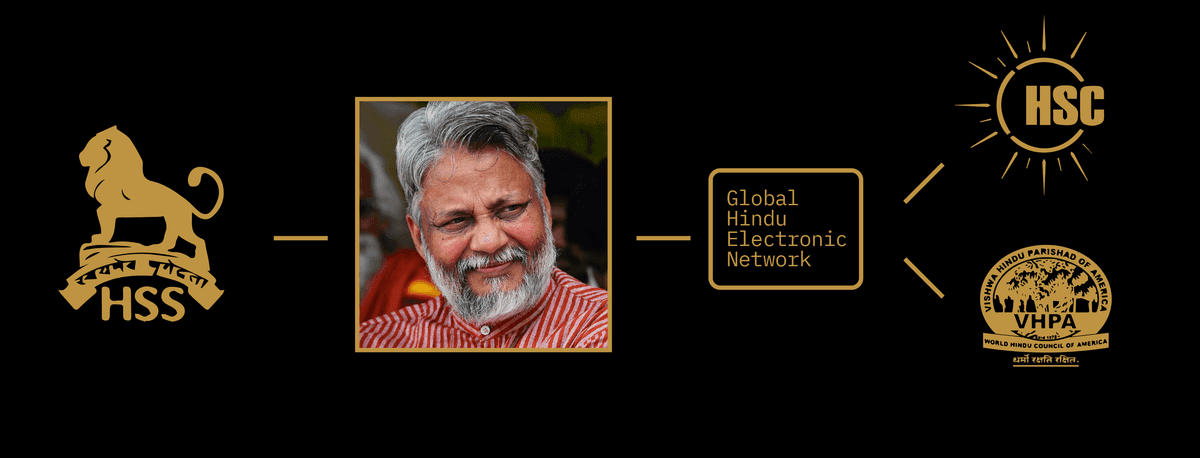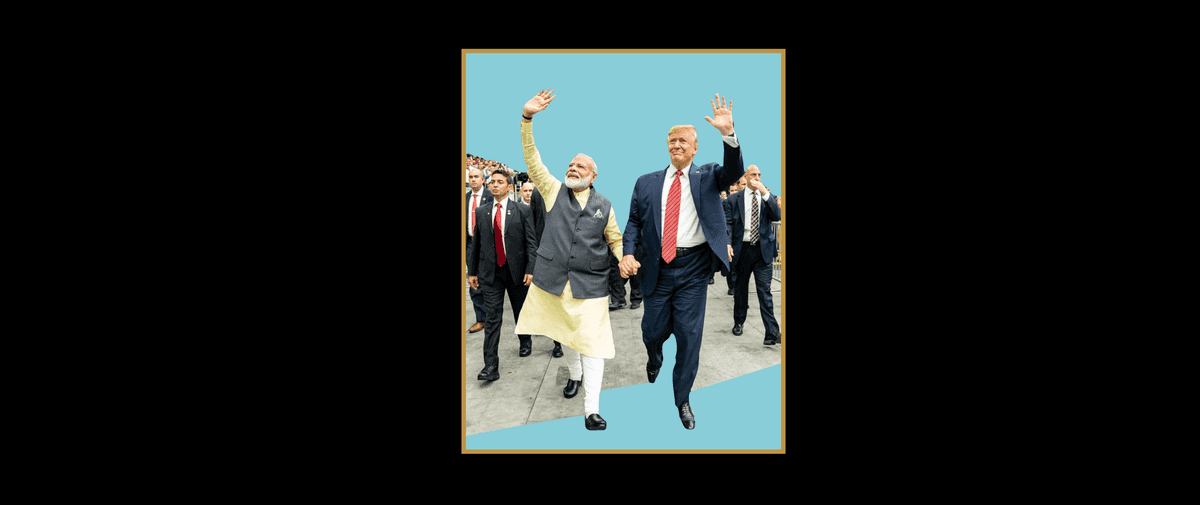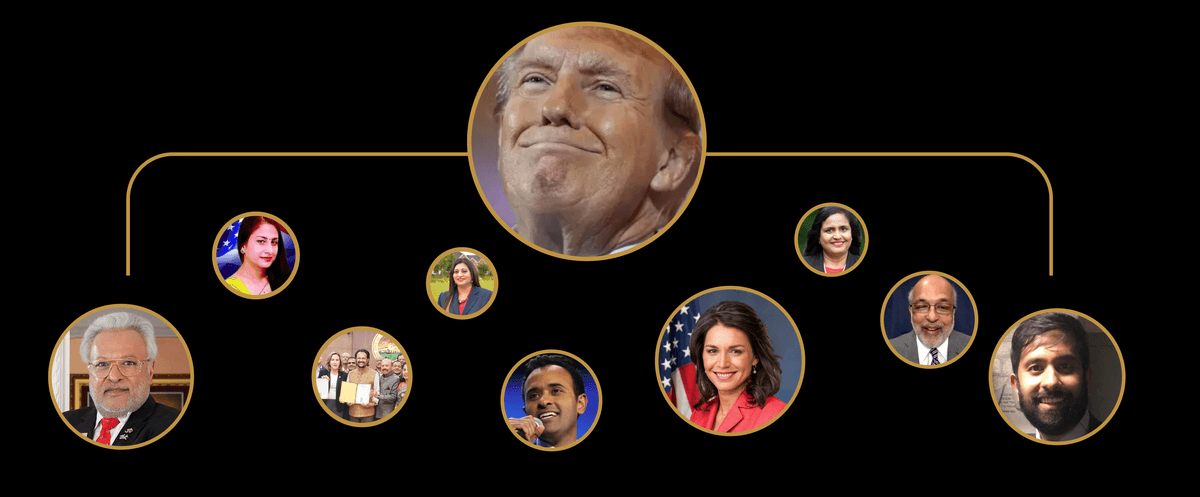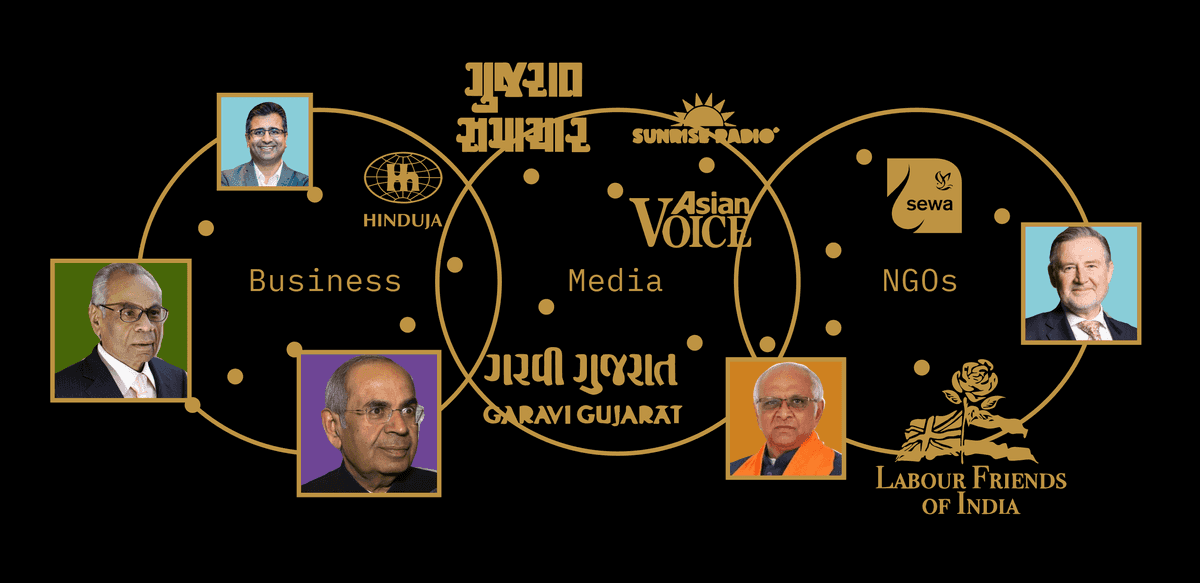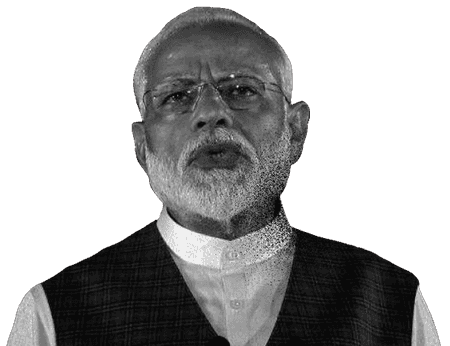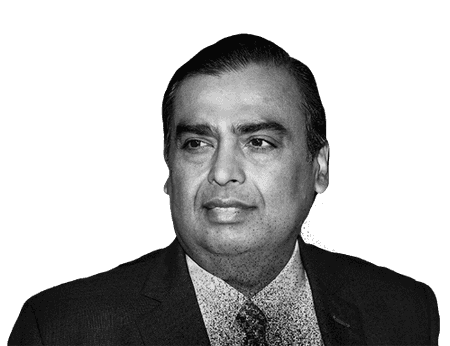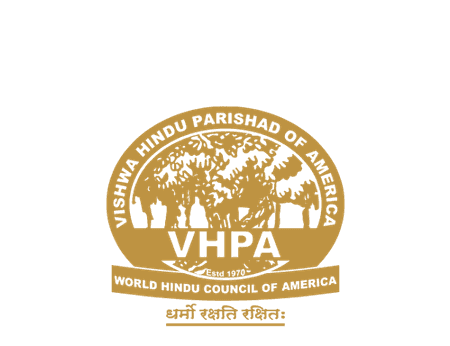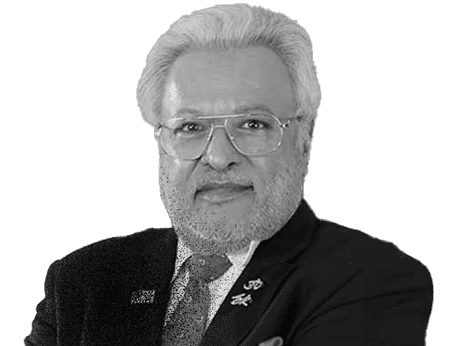On 22 January 2024, Indian Prime Minister Narendra Modi launched his re-election campaign with the inauguration of a new multimillion-dollar Hindu temple upon the ruins of a historic mosque destroyed by fundamentalist mobs 30 years ago. In open defiance of India’s secular constitution, he announced in his address to the nation, “Ram is the faith of India, Ram is the foundation of India. Ram is the idea of India, Ram is the law of India...Ram is the prestige of India, Ram is the glory of India...Ram is the leader and Ram is the policy”1 right after presiding over the consecration of the temple as Chief Priest. Outside, a military helicopter showered flower petals on the temple, and government offices, schools, markets, and even India’s largest public hospital2 were instructed to remain closed for the ceremony. Cries of “Jai Shree Ram,”3 rang through the air.
These images of far-right Hindu nationalists celebrating the triumph of Hindu supremacy were witnessed not just in India, but around the world. Laddoos were distributed at Times Square,4 car rallies were organised and billboards were put up across 21 states in the United States.5 6
Bloody History of the Babri Masjid Demolition
Thirty years ago, on 6 December 1992, Modi’s Bharatiya Janata Party (BJP) and its parent body and a Hindu nationalist outfit, the Vishwa Hindu Parishad (VHP), led a violent mob to demolish the 16th-century Mughal-era mosque, Babri Masjid, to rubble. They claimed that it was the ancient site of a Hindu temple for Lord Ram or the “Ram Mandir”.
A mob of over 150,000 Hindu karsevaks (“labouring servants”) arrived in Ayodhya where the Babri Masjid stood. They arrived on trucks, bikes, and foot, armed with iron rods and sticks, and gathered to attend a rally organized by the VHP. The rally saw incendiary speeches by senior leaders of the BJP, including LK Advani. Shortly after, the crowd marched to the site of the Babri Masjid and tore it down, leaving behind a makeshift Hindu temple in its place. This was followed by the worst communal riots since independence, and over 2,000 people, were killed across India.
Hindutva and the Dismantling of India’s Democratic Institutions
“Islamophobia is no longer a fringe sentiment in India. It has become a state-manufactured ideology,” read the warning issued by Genocide Watch in 2023.7 The 10-year term of the country’s Hindu nationalist government has seen escalating violence and conflict against Muslims, who make up its largest minority — and a steady weakening of democratic institutions that could stand in the way. Modi-led BJP has banned the hijab in schools, introduced “anti-conversion” laws, allowed municipal forces to demolish Muslim households and shops in cities, and pushed for a “uniform civil code” in law.
Ten days after the Babri Masjid was torn down, a committee led by retired High Court Justice Manmohan Singh Liberhan was formed to look into the circumstances leading to its demolition. A thorough investigation found 68 people to be responsible — mostly leaders from the BJP, including senior figures and members of Parliament such as AB Vajpayee, who went on to become the Prime Minister in 1996, LK Advani, and Vijaya Raje Scindia.8 None of them have faced any legal repercussions to date, and the committee’s report is yet to be made public.
The Babri Masjid case remained under judicial review for decades following its demolition. But in 2019, shortly after Modi won his second term, the Supreme Court of India — which has increasingly drawn flak for its willingness to toe the government line and seen its legitimacy dwindle — declared that the disputed land was to be handed over to a trust to build the Ram Mandir, even as it deemed the destruction of the Babri Masjid to be an illegal act.
Back in the late 1980s and early 1990s, in the run-up to and immediate aftermath of the demolition of the Babri Masjid, bricks started arriving in Ayodhya, with the words “Sri Ram,” inscribed on them. 350,000 bricks came from all over the world, including the United States, Canada, Nepal, South Africa, and Germany.9 Even as the mosque stood tall, not yet destroyed by fundamentalists, the bricks signaled a nefarious plan to build an eventual Ram Mandir on the site. Much of this was funded by the Vishwa Hindu Parishad of America, the American offshoot of the VHP, which now has close to 200 branches and 100,000 members.
During this time, the Deputy Director of Income-tax at the time, Vishwa Bandhu Gupta, noticed discrepancies in the VHP’s financial holdings, contrary to RBI regulations on foreign funding. He asked VHP to submit its income tax returns for 1989-90 but his notice was first ignored and later quashed by the administration. He was then transferred to a different state, allegedly under pressure from the BJP, and when he persisted, he was suspended for continuing to follow his constitutional mandate.10
The demolition of the Babri Masjid has been the result of a careful strategy of building a coalition of Hindu supremacist forces, demonizing Indian Muslims, and infiltrating India’s institutions. In 2024, the celebrations of 22 January are a grim reminder of the influence and power wielded by the Hindutva project over the years and the nebulous global network of capital which bolsters it.
Fascism, Nazism, and the Global Project of Hindutva
To understand the commitments of Hindutva and its place in the global reactionary project, we must turn to its ideological core, the Rashtriya Swayamsevak Sangh (RSS) — a far-right, Hindu-nationalist, paramilitary organization which created the ruling BJP and to which all major BJP ministers, including Prime Minister Modi, pledge allegiance.
The RSS was founded in 1925 and is currently the world’s largest far-right organization by membership.11 At its founding, it was deeply influenced by European fascist movements including Mussolini’s Blackshirts. The RSS embraced a narrative of Indian history that framed Mughal rulers as “invaders” — a view widely rebutted by historians today, and considered Indian Muslims and Christians to be “emigrants”. This warped reinterpretation of history, mixed with key principles of European fascism shaped the notion of a Hindu nation and formed the basis of the political ideology of Hindu supremacy or Hindutva. One of the aims of the RSS is to forge a global network of right-wing Hindus and create a unified, ethnoreligious Akhand Bharat (Unanimous India) that encompasses the entirety of South Asia including Pakistan, Bhutan, Nepal, Bangladesh, Afghanistan, and Myanmar.
MS Gowalkar, one of RSS’ most influential members, looked to Hitler’s ideology of racial purity as a model to learn from. Gowalkar declared, “Germany has shown how well-nigh impossible it is for races and cultures, having differences going to the root, to be assimilated into one united whole, a good lesson for us in Hindusthan to learn and profit by."12 Indeed, the correlations between Hindutva and Nazism date back to the 1920s, evidenced by some major similarities between the 1923 pamphlet “Hindutva: Who is Hindu?” written by VD Savarkar, the father of the political ideology of Hindutva, and Goebbels’ 1926 German publication “Der Nazi Sozi.” These links are not simply relics of the past as they continue to provide ideological vision and fire to the activities of the RSS, BJP, and affiliates. For instance, slogans of “Hail Shree Ram; Hail Hitler” continue to be frequently raised at RSS gatherings.13
In an interview in 1993 with Time magazine, Bal Thackeray, the leader of RSS-allied regional political party, Shiv Sena, commented: “There is nothing wrong if Muslims are treated as Jews in Nazi Germany… if you take Mein Kampf and remove the word 'Jew' and put in its place the word 'Muslim', that is what I believe in.”14 In 2017, the RSS officially disclosed that its health wing had conducted live experiments across various regions in India which aimed at birthing "fair," "tall", and ideal "customized" babies. They had set a target of having such birthing facilitation centers in every state by 2020.15
The inspiration cuts both ways. The Nazi swastika was inspired by a Hindu symbol of strength and good fortune. While neo-Nazi websites in Europe declared Hitler to be the “reincarnation” of the Hindu God Vishnu, RSS activists in India, emblazoned Adolf Hitler as “India’s Swastika God.” The links between Nazism and Hindutva go deeper than ideological similarity. During World War II, Indian nationalists received explicit support from German Nazis — some Indian soldiers even served in Hitler's armies and the SS.16
Hindutva and White Supremacy in the United States
The RSS had started elaborate and systematic efforts to establish its presence in the West by setting up various overseas branches — dating back to the 1950s. In 1989, this presence was further sanctioned after the Hindu Swayamsevak Sangh USA (HSS USA) formally registered in the United States as a tax-exempt, non-profit organization. When the RSS was banned in India (first in 1948 for the assassination of Gandhi and then again in 1975-77), the HSS played an active role in raising funds to keep the RSS infrastructure running.17
The HSS USA not only adapted the modus operandi of the RSS shakhas but built on them to make them stronger and supplement them with alternative techniques. To cater to the sophisticated means of communication of the high-tech Indian bourgeoisie in the US, they invented the cyber shakha (cyber center).18 The first one was inaugurated in September 1999 in New Delhi by Rajendra Singh. In addition to these cyber shakhas, the RSS also resorted to a great number of websites to reach its sympathizers; the most important of these websites being the Global Hindu Electronic Network (GHEN, www.hindunet.org), which was launched in 1996 by the Hindu Students Council (HSC) and the VHPA.
Additionally, between 2020 and 2022, the Vishwa Hindu Parishad of America ran multiple campaigns to defeat resolutions19 introduced by various city councils across the US to condemn the anti-muslim policies adopted by the Modi government. This also included the National Register of Citizens (NRC) and Citizenship Amendment Act (CAA).20
During their tenures in office starting in 2016, President Trump and Indian PM Narendra Modi based their close personal relationship around the deep overlaps between their respective political projects. Their relationship was epitomized by two massive showpiece events within the space of a year: the Howdy Modi rally in September 2019, and the Namaste Trump event that followed in February 2020, where each leader offered a public endorsement of his counterpart.
While Modi certainly represents the high-water mark of Hindu supremacist power in India, the political convergence between the two movements signals something quite different: that Hindu supremacy, as it manifests in the US, is a key ally of White supremacy.21
But Hindu supremacy also has to be understood as a diasporic project imported by immigration consisting primarily of US-based actors who support, lobby for, finance, and otherwise find common cause with, a movement seeking to establish the absolute political hegemony of Hindus in India. This is crucial to understand the global infrastructure that powers Hindu supremacy.
A convergence of Hindu and White Supremacy was in 2015, when an industrialist and Trump donor, Shalabh Kumar joined hands with Steve Bannon to set up the Republican Hindu Coalition22 (Bannon has had an age-old fascination with Hinduism,23 extending back to his origins within the Traditionalist movement and its fascination with a long-lost golden past marked by pure “Aryan” rule24). Kumar was soon followed by Jay Kansara, the former Director of Government Relations at the Hindu American Foundation (HAF), who left his job to organize “Hindu Voices for Trump.”25
The Americans4Hindus PAC, also founded by Hindu supremacists, was established in late 2019 by another set of Hindu far-right leaders with the explicit purpose of punishing the Congressional Progressive Caucus for some of its members’ positions on human rights violations in India.
A handful of VHP of America affiliates went on to join the Republican Party in its MAGA avatar. One such figure, Purnima Nath,26 also campaigned for Trump,27 and founded a platform called #iExitLeft, seeking to convince Hindu-Americans to leave the Democratic party for the far-right. Srilekha Palle and Manga Anantatmula’s politics converged on similar grounds. Another VHP of America affiliate, Vibhuti Jha, also ran for state office in New York in 2022 as a Republican and has become a close associate of the infamous anti-Muslim ideologue Robert Spencer. As a frequent guest on Jha's popular talk show, Spencer has found a way to revive a dwindling audience in the Hindu far-right.
Tulsi Gabbard, who is funded by BJP and RSS affiliates in the US, has in the past opposed House resolutions that call on Modi to protect the rights of minorities. An analysis of Gabbard's financial disclosures since 2011 found that "dozens of [her] donors have either expressed strong sympathy with or have ties to the Sangh Parivar — a network of religious, political, paramilitary, and student groups that subscribe to the Hindu supremacist, exclusionary ideology known as Hindutva."28 At the heart of this ideological affinity, however, is the propinquity to capital. Current and former members of Sangh affiliates in the US have donated "hundreds of thousands of dollars to Gabbard’s campaigns since 2011."29
Vivek Ramaswamy’s Republican Presidential nomination marks the most recent manifestation of this convergence.30 Ramaswamy has repeatedly praised Indian PM Narendra Modi,31 arguing that US actors should emulate how Modi “talked unapologetically about Indian national identity”; and has actively associated with Hindu supremacist groups in the United States — most notably the VHP of America (whose two affiliated advocacy wings have both hosted galas featuring Ramaswamy as keynote speaker32).33 During his speeches at both these events, Ramaswamy emphasizes synergistic fascist talking points, including “the revival of merit,” “the anti-woke agenda,” and the need to defend India, Israel, and the US from what he characterized as unfair criticism.
Hindutva in the UK
In the United Kingdom, Hindus are a significant political constituency in some areas. 14.7% of the inhabitants of Leicester, 19.6% of those in the London Borough of Harrow, 17.2% of those of the London Borough of Brent, and 4.1% of Londoners as a whole are Hindus.
Notable entrepreneurs and significant contributors from the UK to the RSS include businessman Manoj Ladwa and the Hinduja brothers, SP (Srichand) and Gopichand, who lead the Hinduja Group. These individuals, who are wealthy and belong to upper castes, have maintained strong ties with local officials and leaders of diaspora organizations.34
Media outlets owned by members of this community, such as Radio Sunrise (owned by the Hinduja family), the newspapers Garavi Gujarat and Gujarat Samachar, and the magazine Asian Voice (owned by CM Patel, a prominent figure in the Swaminarayan movement), have been instrumental in promoting a Hindu-centric perspective of the Gujarati community in Britain. The Swaminarayan movement, a major religious force for the Sangh Parivar in the UK, has made significant strides in standardizing Hinduism, creating a set of teachings known as the "canon", reminiscent of the VHP’s efforts to establish a unified Hindu doctrine. This movement's influence has grown as Gujarat has become a key base for the Sangh Parivar.35
Starting from the 1990s, the Hindutva movement has been collecting a good portion of its funds from communities in the UK. Going back to the Babri Masjid incident in 1992, bricks bearing the names of British cities were sent — along with generous donations — by the local branches of the VHP to Ayodhya to build a new Ram temple. Since then, the inflow of money from abroad has become a major financial resource for the Sangh Parivar in India.
Recently, secular NGOs, including AWAAZ, exposed these connections and how closely related these UK-based philanthropic organizations were to the RSS. After the Gujarat pogrom of 2002, it was revealed that Sewa International diverted funds raised for earthquake relief and channelled them to organisations directly involved in carrying out the violence and propagating the Hindutva ideology across slums in India.36
In 2001, Barry Gardiner, MP for Brent North and Chair of Labour Friends of India visited Gujarat and personally presented Modi with a cheque for £1 million collected by Sewa International for earthquake relief.37 Gardiner was the first of several MPs — both Labour and Tory — who have demonstrated support for Modi. Gardner, joined by Tory MP Bob Blackman, has also been presented with one of India's highest civilian awards by the Modi government. Bob Blackman recently made the news when he called out the BBC for their “biased reporting” of the Ram Mandir consecration.38
Following massive protests and scathing criticism from international human rights organizations for his handling of the 2002 Gujarat pogrom, Modi was banned from entering the US and UK. Barry Gardiner, however, continued to display an endorsement from him on his own campaign material. In 2013, Gardiner attempted to invite him to the UK — only changing his mind after South Asian, human rights and trade union groups staged a vocal protest.
But the Hindutva presence in the UK starts to get even more sinister as the BJP continues to establish its rule in India. In the six weeks or so before the UK’s 2019 general election, WhatsApp messages started circulating urging Hindus to vote Tory,39 claiming the Labour Party was anti-Indian for criticizing Modi’s policies in Kashmir. Soon after, leaflets dropped through people’s doors emphasizing this message. Then, with just over two weeks left till election day, a spokesperson for the Hindu Council made a statement in support of Rabbi Mirvis’ claim that the Labour Party is anti-Semitic, adding that it is "anti-Hindu" too’.40
In 2022, when the unrest in Leicester unleashed a barrage of anti-Muslim hate speech online with the hashtag #HindusUnderAttack, the situation was “being fueled from 4,000 miles away.”41 Over half of the 200,000 tweets were coming from accounts based in India — most of them from the Hindu nationalist propaganda site OpIndia.
Within weeks of this occurrence, the UK’s leader of the opposition, Keir Starmer vowed to combat “Hinduphobia”42 — an odd stance for a country with no such history. He then went on to distance the Labour Party from a resolution in favor of Kashmiri self-determination passed by the Labour Conference under Jeremy Corbyn. But Hindutva has for too long built an ally with the Conservative party: Rishi Sunak’s father-in-law is Infosys India founder, NR Narayana Murthy, who backed Modi for his second term.
Hindutva and Silicon Valley
Since coming to power in 2014, the BJP has attempted “to foreground revisionist histories with a glorified view of a Hindu past”43 by rewriting school textbooks,44 setting up “RSS-model schools”,45 and lobbying streaming platforms to remove “anti-nationalist” content.46 Social media has been a keen ally in this regard.
Silicon Valley’s social media giants have been lobbied by the BJP and the RSS to limit "anti-national" and "anti-Hindu content" on their digital platforms. To their great material advantage, these social media giants have quietly played their part, acquiescing to all requests made by the ruling party. On September 27, 2015, Modi visited Silicon Valley as part of a 2-day tour to promote "Digital India", becoming the first Indian leader to visit the West Coast in more than 30 years. He addressed a crowd of 18000+ attendees and also met with the CEOs of Apple, Google, Microsoft and Tesla. The second day of his visit began with a town hall at Facebook headquarters with Mark Zuckerberg.
The results of these meetings were as follows. By the end of 2019, Facebook placed India within “tier zero,” meaning it was one of the countries of utmost priority for the network’s harm-reduction efforts.47 Yet, 87% of the company’s global budget for time spent on classifying misinformation was earmarked for the United States, while only 13% was set aside for the rest of the world.48 According to the National Crime Records Bureau, 1527 cases of fake news were registered in 2020 in India (more than 3 times the cases registered in 2019).
During this time, Shivnath Thukral, Facebook’s public policy director for India and South Asia was involved in making decisions about how to deal with politicians’ posts, that moderators flagged as violations of hate speech rules, during the 2019 elections.49 In March 2020, he was appointed as WhatsApp India's public policy director where Thukral’s key responsibilities lay in managing the company’s relationship with the Modi government. In April 2020, Facebook announced it would pay $5.7 billion for a 10% stake in Reliance Jio, India’s biggest telecom company, which is owned by Mukesh Ambani.50
Twitter also shares a similar historical trajectory with the Modi government. In the past, they have taken down the account of Hindutva Watch,51 an organization that documents hate crimes against marginalized groups. In 2021, Twitter shut down close to 250 accounts that were critical of the contentious farm laws during the farmer uprising in India. Jack Dorsey even admitted that he did so because the government threatened to shut down its operations and raid its offices.52 More recently, they also admitted to taking down certain accounts and posts linked to ongoing protests by farmers demanding higher prices for crops, following an order by the Indian government.53
Indeed, it is impossible to conjure up an image of the chest-thumping might of the BJP in the past decade without thinking about its robust army of digital trolls — sanctioned and amplified by these companies.
Hindutva and Zionism
In 2019, an event at Mumbai University’s Convocation Hall made evident the historical and much-desired relationship between Hindutva and Zionism. The poster for this event read “Leaders' Ideas of Nations in the Context of Zionism and Hindutva” and bore side-by-side photos of VD Savarkar and Theodor Herzl, the father of modern political Zionism.54 One of the key speakers of this event was BJP member and then-Rajya Sabha member of parliament, Subramaniam Swamy.
Going as far back as the 1920s, Savarkar was vocal in his support for the direction that the Balfour Declaration was heading towards, stating that, “If the Zionists’ dreams are ever realized — if Palestine becomes a Jewish state — it will gladden us almost as much as our Jewish friends.”55 He coined the term “Hindutva” in 1922, seeing in Zionism an ethno-nationalist cousin whose ideology shared similar foundations: notions of race supremacy, Islamophobia, and the idea that a nation can be built on a singular identity.
During his time in power, Prime Minister Narendra Modi has further bolstered this relationship. He became the first sitting Indian Prime Minister to visit Israel in 2017, and stood by Benjamin Netanyahu as they paid homage at the grave of Herzl. But nothing paints a clearer picture than India’s defence exchanges with Israel. Weapon imports have risen by over 175 per cent between 2015 and 2019.56 As of 2022, India is Israel's largest client for military equipment sales, and Israel is India's second-largest supplier of military equipment after Russia; approximately 42.1% of all Israeli arms exports are received by India.57 In the same year, Israel hit a new record of $12.5 billion, doubling its arms sales within a decade.
But Israeli arms are not the only import to India. Multiple Indian companies including Bharat Forge,58 Tech Mahindra,59 Adani Group60 and Tata Advanced Systems have partnered with Israeli defence companies like IAI, Rafael, and Elbit. An Indian company Tonbo equips Israel's precision-guided bombs,61 while the Elbit-Adani joint venture in Hyderabad is now the only facility outside Israel to produce the Hermes 900 drone.62 A 2023 agreement penned between the two nations allowed temporary employment of 1,00,000 Indian workers in Israel63 to replace the Palestinian workforce displaced after the assault on Gaza.64
As Indians head to the polls in general elections in April-June 2024, the success of the BJP's Hindutva project is clear. It will continue to advance and find allies among other reactionary forces around the world, offering lessons, support and an example.

